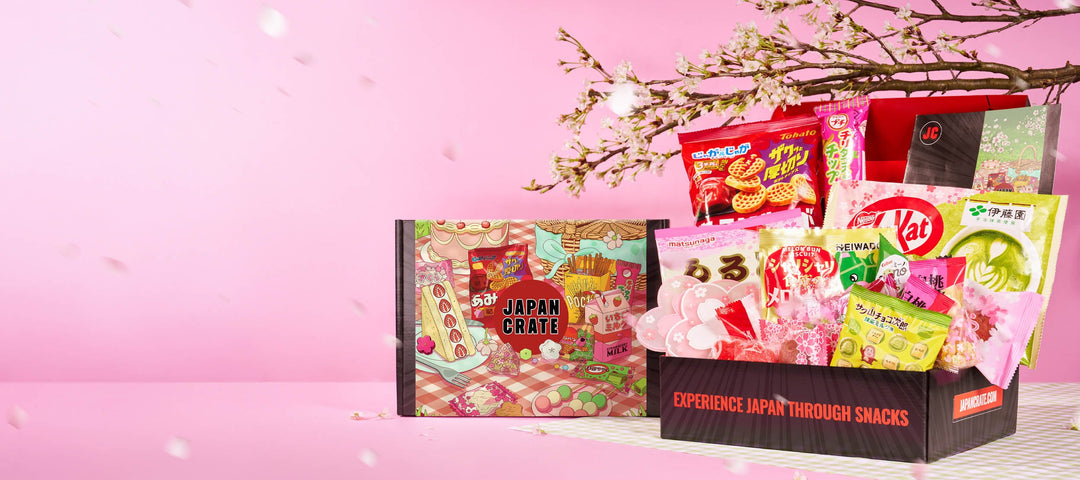Is Ramen Healthy?
One of the world's most well-liked foods is Japanese ramen. This dish is a delicacy around the world because of its distinctive blend of rich flavors and chewy textures. In fact, when talking about Japanese food, ramen will inevitably come up at some point. Ramen is a delicious Japanese soup made of noodles and broth that is frequently garnished with various ingredients like pork, green onions, bean sprouts, seaweed, and corn. As Japanese noodle dishes become increasingly well-known over time, the desire to understand more about this classic Japanese delicacy has only been stronger. Indeed, Japanese ramen is delectable, but is it healthy?
What are Ramen Noodles?

Ramen is a Japanese noodle dish that combines a delectable broth with a variety of noodles, boiled eggs, and meats or vegetables. Ramen is a wonderful soup that is frequently sold by street vendors and small eateries in Japan, where it is seen as an instant snack. Ramen is a highly regionalized meal that is served in many different forms throughout Japan but always uses the same broth and noodle recipe.
In general, there are four different types of ramen. Three of these ramen types are based on seasonings like miso ramen, shio ramen (salt), and shoyu ramen (soy sauce), while the fourth is tonkotsu or pork bone soup. Seasonings and stock ingredients, like chicken, fish, and seafood, are combined from place to place and store to store. Without a doubt, Japanese eateries have really made their own ever since ramen was introduced in Japan.
What are Ramen Noodles Made of?

Ramen is produced with wheat flour, water, and salt, just like a lot of other kinds of wheat noodles. The ingredients are combined, formed into a dough, rolled (or hand-pulled), sliced, and steam-cooked. The ramen noodles might be thick and straight or thin and curly. Typically, a thicker noodle goes with a heavier broth, but occasionally, ramen restaurants may let customers select both the type of broth and the kind of noodles. Japanese cooks go above and beyond since their double broths frequently contain both chicken and pork. As the soup simmers for hours on end, they also like adding aromatics. These aromatics include carrots, onions, scallions, ginger, garlic, and scallions. You end up with a richly flavored soup that generously coats the noodles with taste.
Moreover, the basic ingredients for most instant ramen noodles are wheat flour, water, salt, and kansui, an alkaline mineral. Kansui, a kind of alkaline water, is responsible for ramen noodles' distinctive springy texture and yellow color. Additionally, noodles' flexibility and chewiness are due to kansui. Baking soda can be used to simulate the effects of kansui, but true ramen masters will go to additional lengths to locate a bottle of the actual thing.
Is Ramen Healthy?

In Japan, fresh noodles are the norm. Although not all establishments hand-make their noodles, there are a few well-known shops in larger cities that do. Additionally, the taste will come from the broth and will be in the form of salt, soy, miso, or pork. While some fish stock is available, most broths are made with beef and include a lot of sodium. However, ramen isn't really regarded as a healthy food in Japanese eateries. First off, it contains a lot of white flour-based noodles in one serving, making it excessively starchy and bad for blood sugar regulation. Second, there may be some additional lipids in the broth, which is typically rather salty.
What Makes Ramen Unhealthy?

That said, the risk of developing metabolic syndrome is 68% higher in people who consume fresh ramen noodles and packaged ramen noodles more than twice a week. This is because of the noodles' ingredients that undergo extensive processing, such as high sodium and saturated fat. Sodium is a direct contributor to high blood pressure, which can quickly result in heart disease, which also contributes to diabetes, high blood pressure, high blood sugar, and stroke.
The flavor packets of the instant noodles contain monosodium glutamate, also known as MSG, in addition to too much sodium. Some have complained of headaches, numbness or tingling, chest pain, flushing and perspiration, weakness, and nausea as MSG side effects. These assertions are unsupported by scientific evidence; however, scientists recognize that some people may respond poorly to the flavor packet MSG content. Moreover, because the noodles are fried during production, ramen noodles have a high-fat content. Ten grams of fat, including 5 grams of saturated fat, are included in a half package of ramen. Dietary saturated fat elevates cholesterol and is a factor in cardiovascular disease.
How many calories are in a bowl of ramen noodles?
Ramen's sodium content may not be the only component of this dish that can balloon your belly if you're trying to monitor your weight. Ramen noodles vary in calories based on the quality and portion size. However, a normal serving of dry instant ramen noodles could have 220 calories, 10 grams of fat, 28 grams of carbohydrates, and 7 grams of protein but the fix-ins and toppings included in the ramen soup will affect the number of calories in your ramen.
How to Make Ramen Noodles Healthier
If you like ramen but are worried about the effects on your health, here are some additional suggestions to enhance your ramen's nutritional value.
1. Add Many Vegetables

Typical restaurant ramen bowls include seaweed, bean sprouts, soft-boiled eggs, and specific veggies like leeks or corn. However, if your goal is to lose weight, you might want to increase the number of green veggies in your instant noodle and substitute tofu for pork as your protein source. The nutrients that regular ramen noodles lack can be supplemented by cooking or adding fresh veggies like carrots, broccoli, onions, or mushrooms to instant ramen noodles. Also, other green veggies like Bok choy, cabbage, and spinach all go great in a ramen bowl and are easy to find. In fact, you can make your own vegetable broth using vegetables you like. These healthy ingredients will increase the meal's nutritious fiber, protein, vitamins, and minerals while lowering its sodium and saturated fat content.
2. Add a Source of Protein

You could have believed that when you eat instant noodles with chicken, beef, or pork flavoring would satisfy your need for protein. But it is not. Adding protein, which doesn't have to be meat, can transform any bowl of noodles into a much more well-balanced and satisfying meal. Ramen noodles are low in protein, so adding eggs, chicken, fish, or tofu as a topping can give you a dose of protein and help you feel filled for longer.
3. Choose the Right Broth

There are four basic varieties of ramen broth used in traditional Japanese dishes: shoyu (flavored with soy sauce), shio (salt), miso (soybean paste), and tonkotsu (pork bone). However, you can experiment with different types of broths that can be lower in fat and salt content if you're trying to fit your ramen dishes into your diet. You can mix some miso paste with low-sodium chicken broth. Miso is one of the healthiest ramen ingredients, as it contains protein, manganese, vitamin K, zinc, and probiotics that are living "good" bacteria that reside in our bellies and are associated with a better immunological and digestive system.
4. Choose Low-Carb Noodles
It would be best if you chose some keto-friendly noodles for healthier noodles. They may not taste precisely the same as the ones you normally slurped, but they can nonetheless sate your cravings. You might try the Japanese konjac yam-based shirataki noodles, although many people complain that shirataki is too slimy and jellyfish-like. But these shirataki noodles are sure to be fresh, shelf-stable, vegan, high-fiber, low-net-carb noodles, and strong in protein, fiber, and other healthy nutrients.
5. Lower the Sodium
Look for ways to lower the sodium content of your ramen dish. You could completely avoid packaged ramen and decide to cook your own at home rather than eat out. It's simpler to choose healthier ingredients when you cook at home. Pick low-sodium chicken broth and low-sodium soy sauce to prepare low-salt ramen at home.
It's Japan Crate Time!
Japan Crate offers the best and most authentic Japanese sweet and savory snacks you'll love for a very reasonable price. At Japan Crate, we make it easy for every customer to buy Japanese goodies, candies, snacks, and many things you'll definitely adore. You won't need to wait long for the Japanese treats you order online. Delivery and shipping options from Japan Crate are efficient and trustworthy worldwide.
Experience a crate of delectable Japanese snacks delivered to you each month! Just click this link to sign up right now. Sugoi Mart noodles will delight your taste buds with the best instant noodles items in Japan. Explore Sugoi Mart’s collection to supplement your Japanese snacks with tasty noodles. Japan Crate will bring you the taste of Japan in no time!
Author Bio







Leave a comment